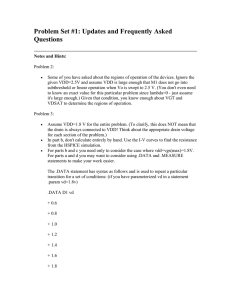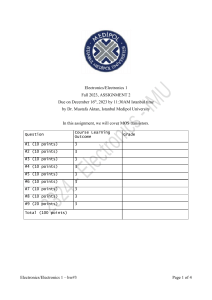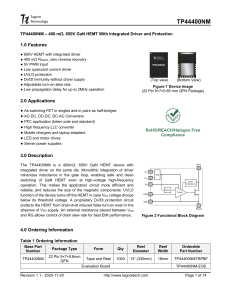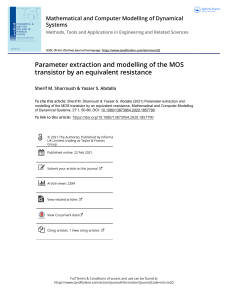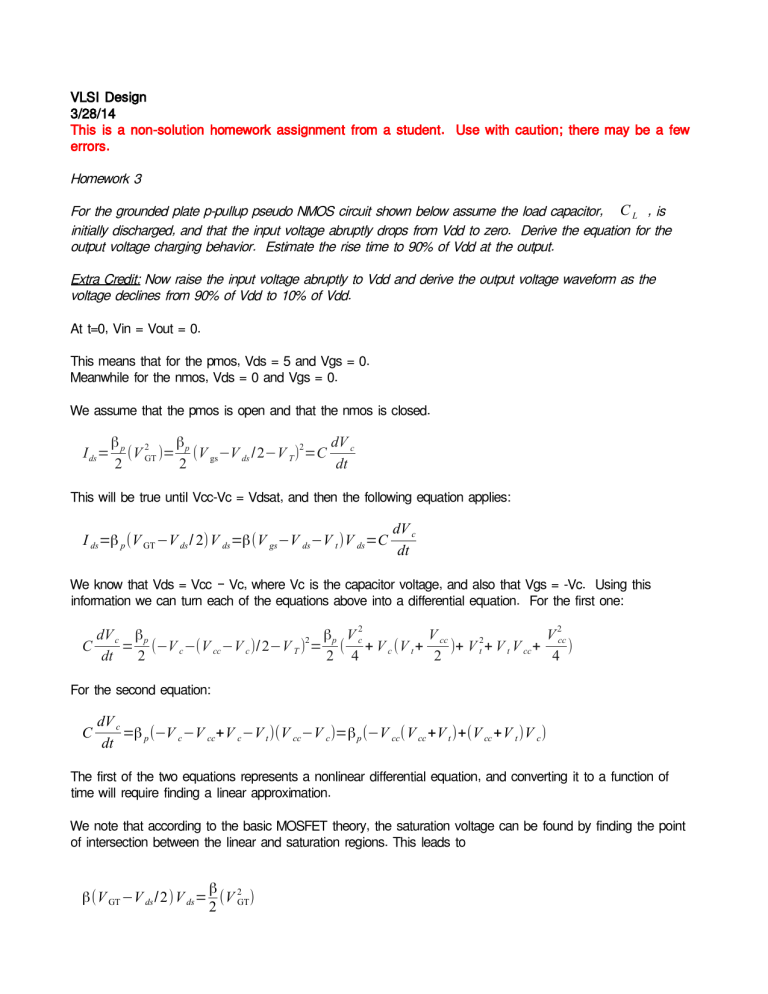
VLSI Design 3/28/14 This is a non-solution homework assignment from a student. Use with caution; there may be a few errors. Homework 3 For the grounded plate p-pullup pseudo NMOS circuit shown below assume the load capacitor, C L , is initially discharged, and that the input voltage abruptly drops from Vdd to zero. Derive the equation for the output voltage charging behavior. Estimate the rise time to 90% of Vdd at the output. Extra Credit: Now raise the input voltage abruptly to Vdd and derive the output voltage waveform as the voltage declines from 90% of Vdd to 10% of Vdd. At t=0, Vin = Vout = 0. This means that for the pmos, Vds = 5 and Vgs = 0. Meanwhile for the nmos, Vds = 0 and Vgs = 0. We assume that the pmos is open and that the nmos is closed. I ds = βp 2 β dV c 2 (V GT )= p (V gs −V ds / 2−V T ) =C 2 2 dt This will be true until Vcc-Vc = Vdsat, and then the following equation applies: I ds=β p (V GT −V ds / 2)V ds =β(V gs −V ds−V t )V ds =C dV c dt We know that Vds = Vcc – Vc, where Vc is the capacitor voltage, and also that Vgs = -Vc. Using this information we can turn each of the equations above into a differential equation. For the first one: 2 2 dV c βp βp V c V cc V cc 2 2 C = (−V c −(V cc −V c )/ 2−V T ) = ( + V c (V t + )+ V t + V t V cc + ) dt 2 2 4 2 4 For the second equation: C dV c =β p (−V c −V cc+V c −V t )(V cc−V c )=β p (−V cc (V cc +V t )+(V cc +V t )V c ) dt The first of the two equations represents a nonlinear differential equation, and converting it to a function of time will require finding a linear approximation. We note that according to the basic MOSFET theory, the saturation voltage can be found by finding the point of intersection between the linear and saturation regions. This leads to β β(V GT −V ds /2)V ds = (V 2GT) 2 V ds=V GT V ds =V GT =V gs −V t =−V c −V t V cc−V c =−V c −V t V cc =−V t If we assume that the threshold voltage is substantially less than the supply voltage, which is usually the case, then the condition is never satisfied and we instead remain in the linear region for the entire operation of the transistor: C dV c 2 =β p (−V c −V cc + V c )(V cc −V c )=β p (−V cc + V c ) dt A simple analysis of the differential equation yields a transient solution: p V c (t )= β A C


